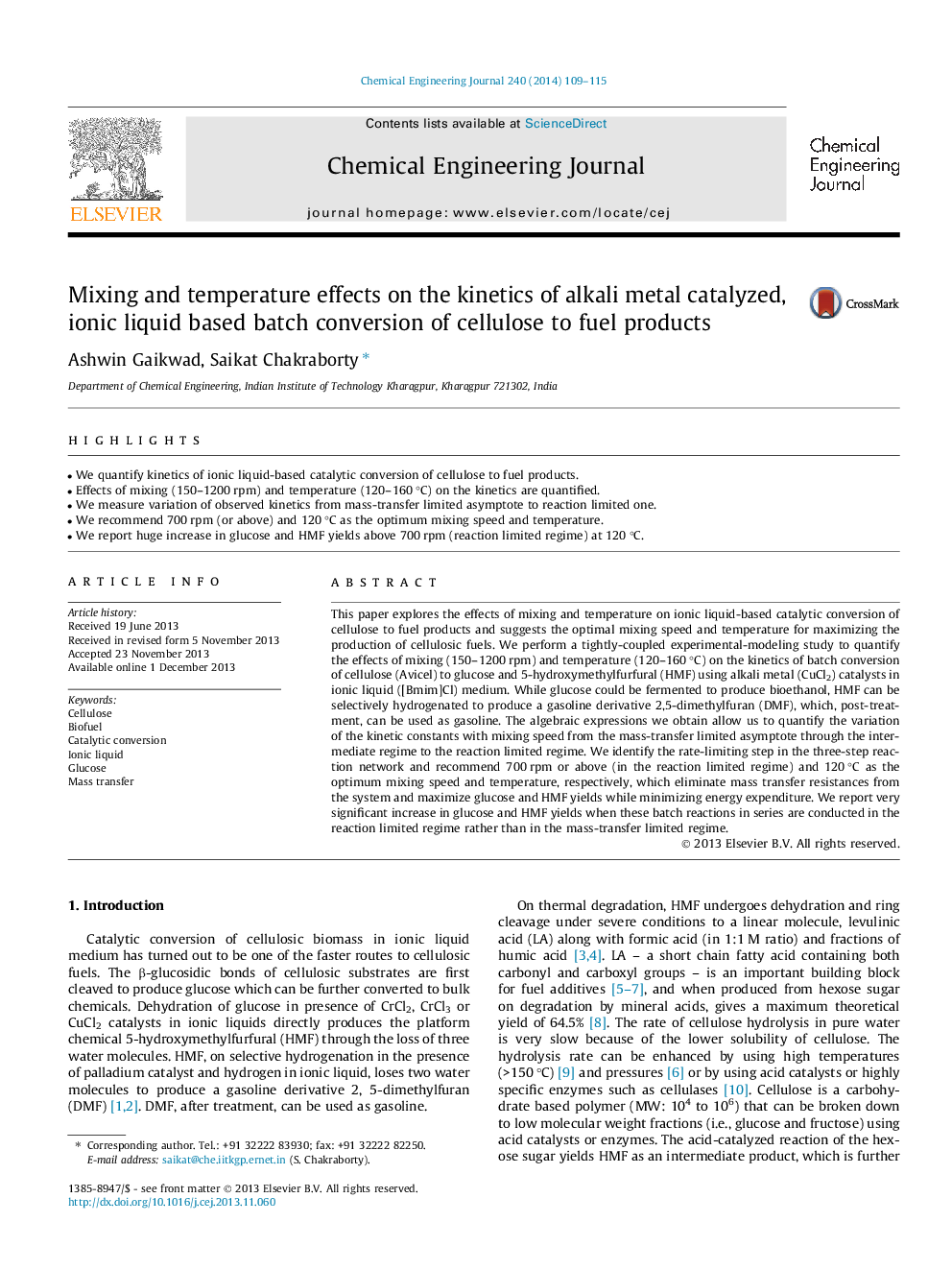| کد مقاله | کد نشریه | سال انتشار | مقاله انگلیسی | نسخه تمام متن |
|---|---|---|---|---|
| 147712 | 456398 | 2014 | 7 صفحه PDF | دانلود رایگان |
• We quantify kinetics of ionic liquid-based catalytic conversion of cellulose to fuel products.
• Effects of mixing (150–1200 rpm) and temperature (120–160 °C) on the kinetics are quantified.
• We measure variation of observed kinetics from mass-transfer limited asymptote to reaction limited one.
• We recommend 700 rpm (or above) and 120 °C as the optimum mixing speed and temperature.
• We report huge increase in glucose and HMF yields above 700 rpm (reaction limited regime) at 120 °C.
This paper explores the effects of mixing and temperature on ionic liquid-based catalytic conversion of cellulose to fuel products and suggests the optimal mixing speed and temperature for maximizing the production of cellulosic fuels. We perform a tightly-coupled experimental-modeling study to quantify the effects of mixing (150–1200 rpm) and temperature (120–160 °C) on the kinetics of batch conversion of cellulose (Avicel) to glucose and 5-hydroxymethylfurfural (HMF) using alkali metal (CuCl2) catalysts in ionic liquid ([Bmim]Cl) medium. While glucose could be fermented to produce bioethanol, HMF can be selectively hydrogenated to produce a gasoline derivative 2,5-dimethylfuran (DMF), which, post-treatment, can be used as gasoline. The algebraic expressions we obtain allow us to quantify the variation of the kinetic constants with mixing speed from the mass-transfer limited asymptote through the intermediate regime to the reaction limited regime. We identify the rate-limiting step in the three-step reaction network and recommend 700 rpm or above (in the reaction limited regime) and 120 °C as the optimum mixing speed and temperature, respectively, which eliminate mass transfer resistances from the system and maximize glucose and HMF yields while minimizing energy expenditure. We report very significant increase in glucose and HMF yields when these batch reactions in series are conducted in the reaction limited regime rather than in the mass-transfer limited regime.
Journal: Chemical Engineering Journal - Volume 240, 15 March 2014, Pages 109–115
